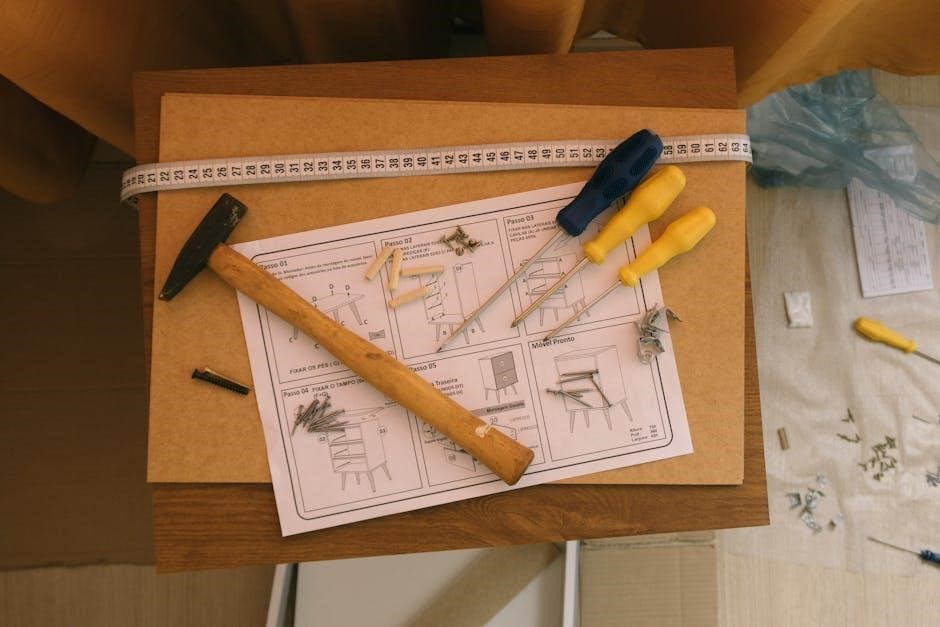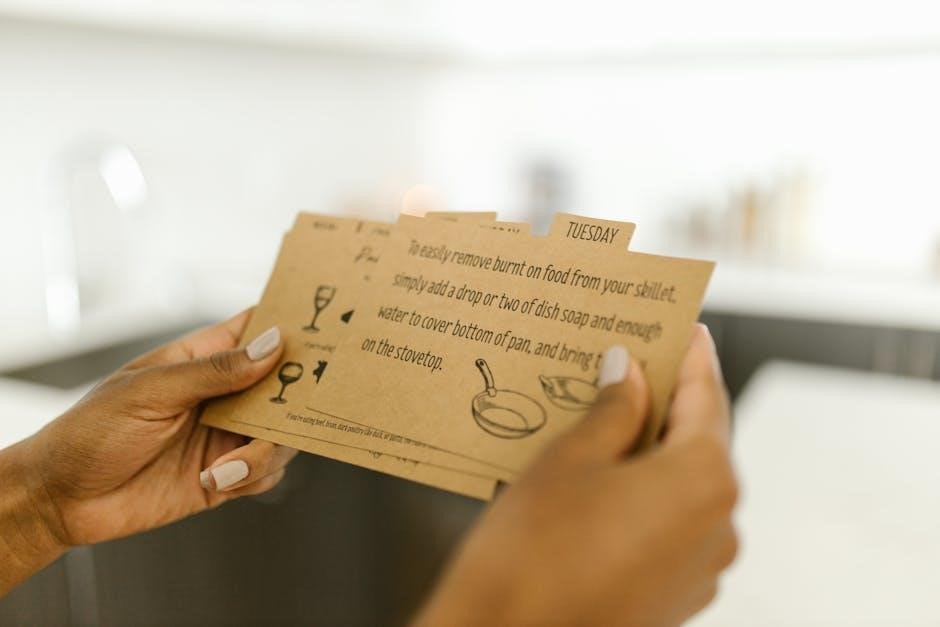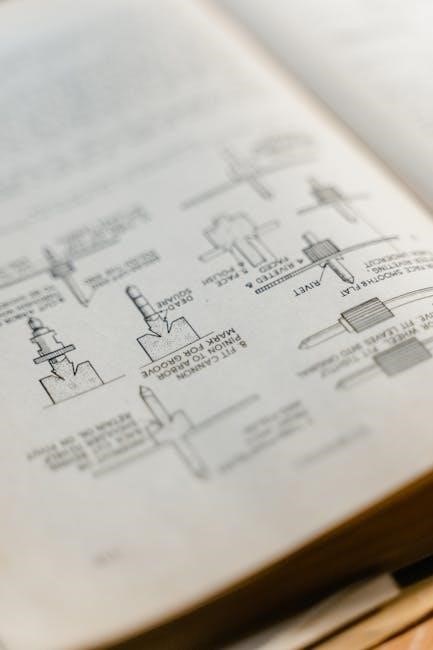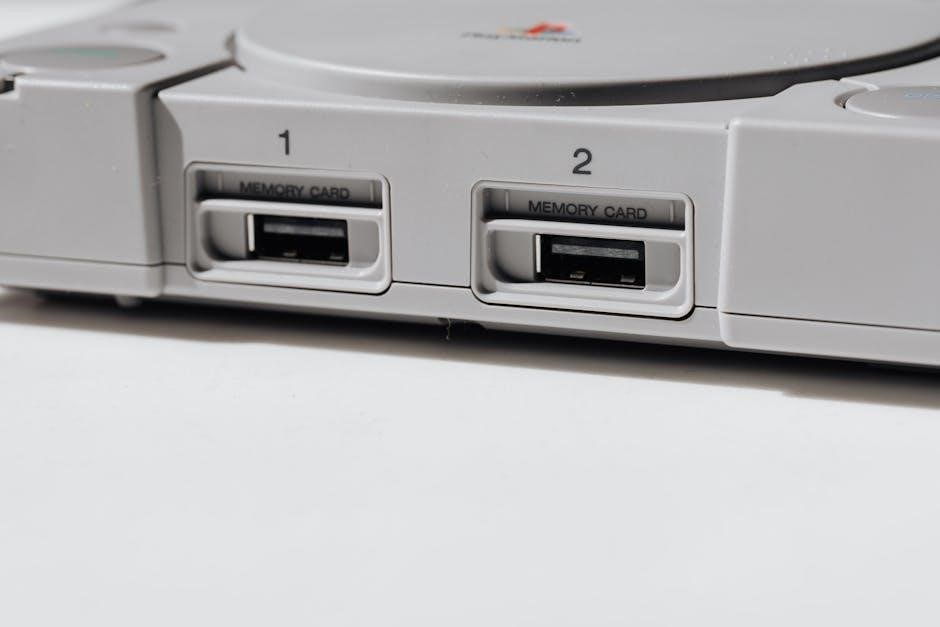The GBC Ultima 65 Laminator is a high-performance thermal roll laminator designed for efficient document protection. Ideal for offices, schools, and professional settings, it ensures durable and long-lasting lamination results.
Overview of the GBC Ultima 65 Laminator
The GBC Ultima 65 Laminator is a high-performance thermal roll laminator designed for professional-grade document protection. With its advanced thermal lamination technology, it delivers clear, durable, and long-lasting results. Suitable for offices, schools, and industrial settings, this laminator is known for its efficiency and user-friendly design. It supports various document sizes and thicknesses, making it versatile for laminating posters, ID cards, and other materials. The Ultima 65 is built with robust construction, ensuring reliability and consistent performance. Its intuitive controls and fast operation make it an ideal choice for high-volume lamination needs. This laminator is a trusted solution for protecting and preserving important documents with minimal effort and maximum quality.
Importance of Following the Instructions
Following the instructions for the GBC Ultima 65 Laminator is crucial for ensuring safe and effective operation. Proper usage prevents damage to the machine and ensures optimal lamination results. Safety guidelines, such as avoiding unauthorized repairs and keeping the laminator away from water, are essential to prevent accidents. Adhering to the instructions also extends the lifespan of the laminator and maintains its efficiency. Ignoring these guidelines can lead to malfunctions or injuries. Always consult the manual for specific operational steps and troubleshooting tips to guarantee smooth performance and protect your investment in this high-quality laminating equipment.
Safety Guidelines
Always follow safety guidelines to prevent accidents. Avoid self-maintenance or repairs, and never connect the laminator to an electrical source without proper setup. Adhere to manual instructions.

General Safety Precautions
To ensure safe operation of the GBC Ultima 65 Laminator, always follow general safety precautions. Read the instruction manual thoroughly before use. Avoid unauthorized repairs or modifications, as this can lead to malfunctions. Keep children away from the laminator while it is in operation. Never touch hot surfaces or internal components, as they can cause burns. Ensure the laminator is placed on a stable, flat surface to prevent tipping. Always unplug the device when not in use or during maintenance. Follow all warning labels and symbols provided on the machine. Properly dispose of laminating rolls and materials to avoid environmental hazards. Adhering to these guidelines ensures safe and effective operation.
Warning Labels and Symbols
The GBC Ultima 65 Laminator features warning labels and symbols to alert users of potential hazards. These labels are strategically placed to ensure safe operation. Common symbols include warnings for high temperatures, electrical components, and moving parts. Always pay attention to these indicators, as they highlight critical safety information. For example, a warning label may indicate “Do Not Touch Hot Surfaces” or “Keep Children Away.” Never remove or obscure these labels, as they are essential for maintaining safety. If a label is damaged or missing, refer to the instruction manual or contact customer support for assistance. Ignoring these warnings can lead to accidents or equipment damage, so always adhere to the guidelines provided.
Electrical Safety Tips

When using the GBC Ultima 65 Laminator, always follow electrical safety guidelines to prevent accidents. Ensure the laminator is connected to a properly grounded electrical outlet, as specified in the manual. Avoid using damaged power cords or overloaded circuits, as this can lead to electrical hazards. Never expose the laminator to water or moisture, as this increases the risk of electrical shock. Keep the laminator away from flammable materials and avoid operating it in areas with high humidity. If you notice any electrical issues, such as sparks or unusual odors, unplug the device immediately and contact a professional. Always unplug the laminator when not in use or during maintenance to ensure safety. Adhering to these tips helps protect both the user and the equipment from potential electrical risks.
Features and Benefits
The GBC Ultima 65 Laminator offers advanced thermal lamination technology, ensuring durable and professional results. Its large roll capacity handles various document sizes efficiently, while the user-friendly design simplifies operation. Built for speed and reliability, it is ideal for high-volume use in offices and professional settings, providing consistent and long-lasting lamination performance.
Thermal Lamination Technology
The GBC Ultima 65 Laminator utilizes advanced thermal lamination technology to create a strong, permanent bond between documents and laminating film. This process involves applying heat to melt the adhesive on the film, ensuring a durable and professional finish. The laminator is designed to handle a wide range of document sizes and thicknesses, making it versatile for various applications. With precise temperature control and even heat distribution, it minimizes the risk of bubbles or wrinkles, delivering consistent results. This technology is ideal for high-volume use, providing long-lasting protection for important documents while maintaining their clarity and integrity. It is a reliable choice for offices, schools, and professional settings requiring efficient lamination solutions.

Roll Capacity and Size
The GBC Ultima 65 Laminator is designed to accommodate laminating rolls with a maximum width of 25 inches, making it ideal for large-format documents. It supports both 1.5-inch and 3-inch core laminating rolls, offering flexibility for various projects. The laminator’s roll capacity ensures efficient handling of high-volume lamination tasks, reducing downtime and increasing productivity. Its robust design allows for seamless operation with different roll sizes, ensuring consistent results. Whether laminating posters, charts, or standard documents, the Ultima 65’s roll capacity and size options provide versatility and convenience for professional and industrial applications. This feature makes it a reliable choice for offices, schools, and print shops requiring durable and efficient lamination solutions.
User-Friendly Design
The GBC Ultima 65 Laminator features an intuitive and ergonomic design, making it easy to operate for users of all skill levels. The control panel is straightforward, with clear buttons and indicators for temperature, speed, and operational status. A digital display provides real-time feedback, ensuring precise control over the lamination process. The laminator’s compact footprint saves space while maintaining accessibility. Additional features like a convenient roll loading system and an easy-to-use tension adjustment mechanism further enhance usability; Designed with user comfort in mind, the Ultima 65 minimizes effort and maximizes efficiency, making it a practical choice for both professional and industrial environments. Its user-friendly design ensures a seamless lamination experience.
Efficiency and Speed
The GBC Ultima 65 Laminator is engineered for high-efficiency performance, delivering quick and consistent results. With a fast warm-up time, it minimizes downtime, allowing users to start laminating promptly. The laminator operates at a steady speed, ensuring smooth and even document processing. Its advanced thermal lamination technology optimizes productivity, making it ideal for high-volume tasks. Designed to handle various document sizes, the Ultima 65 maintains precision and speed, even during continuous use. This machine strikes a perfect balance between efficiency and quality, ensuring professional-grade lamination without compromising on time. Its robust design and reliable performance make it a top choice for busy offices and industrial settings requiring rapid document protection.

Operating Instructions

Follow the step-by-step guide to prepare, load, and operate the GBC Ultima 65 Laminator. Ensure proper temperature settings and initiate the lamination process smoothly for optimal results.
Preparing the Laminator
Before using the GBC Ultima 65 Laminator, ensure it is properly prepared. Unpack the device carefully and place it on a stable, flat surface. Plug in the power cord and allow the laminator to reach room temperature. Check for any damage or debris from shipping. Familiarize yourself with the control panel and external components. Read the instruction manual thoroughly to understand safety guidelines and operational procedures. Ensure all warning labels are intact and legible. Perform a test run without materials to verify proper function. This preparation ensures safe and efficient operation, minimizing risks and maximizing productivity. Always follow the manufacturer’s recommendations for setup and maintenance.
Loading the Laminating Roll
To load the laminating roll on the GBC Ultima 65 Laminator, start by opening the laminator according to the manufacturer’s instructions. Locate the roll holders and align the laminating roll with the machine’s rollers. Ensure the roll is properly seated and centered to avoid misalignment. Secure the roll firmly using the provided fasteners or clips. Double-check that the roll is correctly positioned and evenly tensioned. Once loaded, close the laminator and perform a test run to ensure smooth operation. Proper loading is essential for consistent lamination quality and to prevent damage to the machine. Always refer to the instruction manual for specific guidance on loading procedures.
Setting the Temperature
Setting the temperature on the GBC Ultima 65 Laminator is crucial for achieving optimal lamination results. Turn on the machine and allow it to preheat. Use the control panel to select the desired temperature based on the type of laminating film being used. Ensure the temperature matches the film’s specifications, as incorrect settings can damage the machine or the film. Wait for the laminator to reach the set temperature, indicated by a light or beep. Always refer to the instruction manual for specific temperature guidelines. Proper temperature setting ensures even adhesion and prevents bubbles or wrinkles in the finished product. Adjustments may be needed for different materials or thicknesses.
Laminating Process
Once the GBC Ultima 65 Laminator is preheated and ready, align your document with the laminating film, ensuring proper positioning. Feed the document into the laminator at a steady pace, following the guide rails for alignment. The machine will pull the document through the rollers, applying even pressure and heat to seal the film. Allow the laminator to complete the cycle without interruption. After processing, let the document cool slightly before handling to avoid damage. Always follow the manufacturer’s instructions for film thickness and speed settings. Proper technique ensures professional-quality results with minimal effort. Regular maintenance, like cleaning the rollers, helps maintain optimal performance during the laminating process.
Unloading the Finished Product
After the laminating process is complete, carefully remove the finished document from the GBC Ultima 65 Laminator. Allow it to cool for a few seconds to ensure the laminate adheres properly; Handle the document gently to avoid bending or scratching the laminated surface. If necessary, trim excess laminate using a sharp utility knife or scissors, taking care not to cut too close to the document edges. Dispose of any trim safely. For multiple documents, repeat the process, ensuring each item is unloaded and cooled before proceeding. Proper unloading ensures professional results and prevents damage to both the document and the laminator. Always follow the manufacturer’s guidelines for handling finished products.

Maintenance and Care
Regular maintenance ensures optimal performance and longevity of the GBC Ultima 65 Laminator. Clean the rollers and exterior with a soft cloth, and store the laminator in a dry, cool environment.
Cleaning the Laminator
Regular cleaning is essential to maintain the performance of the GBC Ultima 65 Laminator. Turn off and unplug the device before cleaning. Use a soft, dry cloth to wipe down the exterior and rollers, removing any dust or debris. Avoid using harsh chemicals, abrasive materials, or excessive moisture, as they may damage the components. For stubborn residue, lightly dampen the cloth with water, but ensure the laminator is completely dry before reuse. Cleaning the rollers periodically prevents lamination defects and ensures smooth operation. Always refer to the manual for specific cleaning recommendations to avoid voiding the warranty or causing damage to the machine.

Replacing the Laminating Roll
To replace the laminating roll on the GBC Ultima 65 Laminator, first ensure the machine is turned off and cooled down. Open the laminator by releasing the tension knobs or levers, depending on the model. Carefully remove the empty roll, taking note of its alignment. Install the new roll, ensuring it is properly seated and aligned with the machine’s rollers. Tighten the knobs or levers securely but avoid over-tightening, which could damage the mechanism. Refer to the manual for specific instructions, as improper installation may lead to lamination issues. Always use compatible rolls to maintain optimal performance and prevent machine damage.
Storage and Transportation Tips

When storing the GBC Ultima 65 Laminator, place it in a cool, dry environment away from direct sunlight and moisture. Cover the machine to protect it from dust. For transportation, ensure the laminator is securely packed in its original box or a sturdy container to prevent damage. Handle the device with care, as improper movement may cause internal damage. Always check for any visible damage before and after transportation. Refer to the manual for specific storage and shipping guidelines to maintain the product’s warranty and functionality. Proper storage and handling will extend the lifespan of your laminator and ensure optimal performance when in use.
Troubleshooting Common Issues

The GBC Ultima 65 Laminator may face issues like uneven lamination or machine overheating. Refer to the manual for error codes and solutions to resolve these problems effectively.
Common Problems and Solutions
Common issues with the GBC Ultima 65 Laminator include the machine not heating up, uneven lamination, or paper jams. If the laminator doesn’t heat, check the power connection and ensure the temperature is set correctly. For uneven lamination, adjust the roll alignment or clean the rollers. Paper jams can be resolved by turning off the machine, allowing it to cool, and carefully removing the stuck material. Always refer to the manual for specific troubleshooting steps. Regular maintenance, such as cleaning and inspecting the laminator, can prevent many of these issues. Proper care ensures optimal performance and extends the lifespan of the device.
Understanding Error Codes
The GBC Ultima 65 Laminator may display error codes to indicate specific issues. These codes, such as E1 or E2, often relate to overheating, jammed paper, or power supply problems. Refer to the manual for a detailed list of codes and their meanings. For example, E1 might signal excessive temperature, requiring the machine to cool down before use. E2 could indicate a paper jam, which should be resolved by turning off the laminator and carefully removing the stuck material. Understanding these codes helps in quickly addressing and resolving issues, ensuring smooth operation and extending the device’s lifespan. Always follow the recommended solutions to maintain optimal performance and safety.
The GBC Ultima 65 Laminator is a reliable and efficient tool for protecting and preserving documents. By following the instructions and safety guidelines, users can ensure optimal performance and longevity of the machine. Regular maintenance, proper handling, and understanding error codes are key to troubleshooting and preventing issues. This laminator is designed to meet the needs of offices, schools, and professional environments, offering high-quality results with minimal effort. Always refer to the manual for detailed guidance and adhere to safety precautions to maximize its functionality and ensure a safe operating experience. With proper care, the GBC Ultima 65 will remain a valuable asset for all your lamination needs.













































